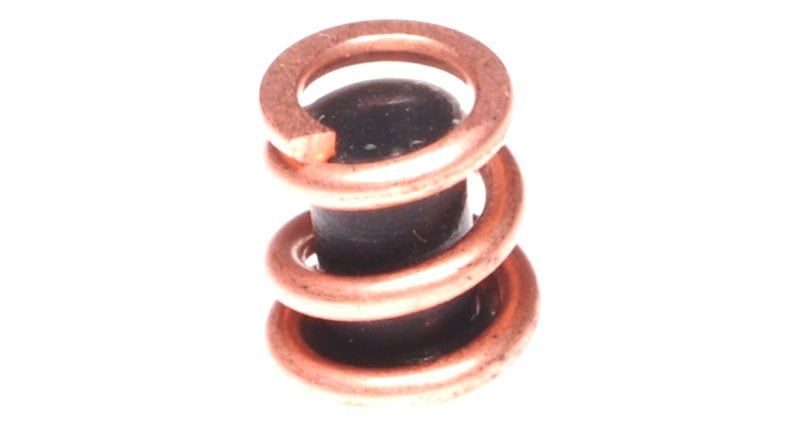
We recently reached out to Chad Albrecht at School of the American Rifle to talk about his recent AR Master Build Class, and discuss simple and inexpensive ways that builders can improve their chances of success when putting together a budget build…by upgrading AR springs.
ARBuildJunkie is blessed to have Chad as a resource to be able to ask occasional questions to. We’re tremendously grateful for his generosity and willingness to share information with our readers. To learn more about him and his School of the American rifle, please be sure to check out our feature interview with him…or other more recent articles which you can find here:
- Common AR-15 Myths – School of the American Rifle
- AR-15 Gas System Issues – School of the American Rifle
- Headspace Gauge & the AR – School of the American Rifle
- AR-15 Feed Ramp Problems – School of the American Rifle
Also, please consider supporting Chad by following School of the American Rifle on Facebook, or via the Instagram.

Q: You just wrapped up a Master Class that ran 18 hours. Can you talk about what a class like that is all about and why it runs so long?
Chad Albrecht, School of the American Rifle: The main reason I call it a “Master” class is essentially the depth and length we go into gauging and checking each component, as well as doing modifications to things that are not quite right. The name is just a way to set the class apart.
There are a lot of shops all over the country, and not to disparage their work, but you can go to almost any gun shop any more and they’re offering classes of all sorts, including AR build classes…or maybe even “armorer’s classes.”
While I have not attended any of these classes, the feedback that I have received on them is most will have you in and out in a couple of hours. 10 or so guys or gals will show up with a parts kit or a pre-supplied parts kit from the shop, and within a few hours, those people will all leave with completed ARs. To me, that just blows my mind.
I say that because I cannot build two ARs in that amount of time with the thoroughness that I put into what I am doing. So, that’s why I call it a “Master” class.
It’s mainly for people who have a little bit of knowledge about the AR already and how to build it…not that I have a pre-requisite for any of my classes.
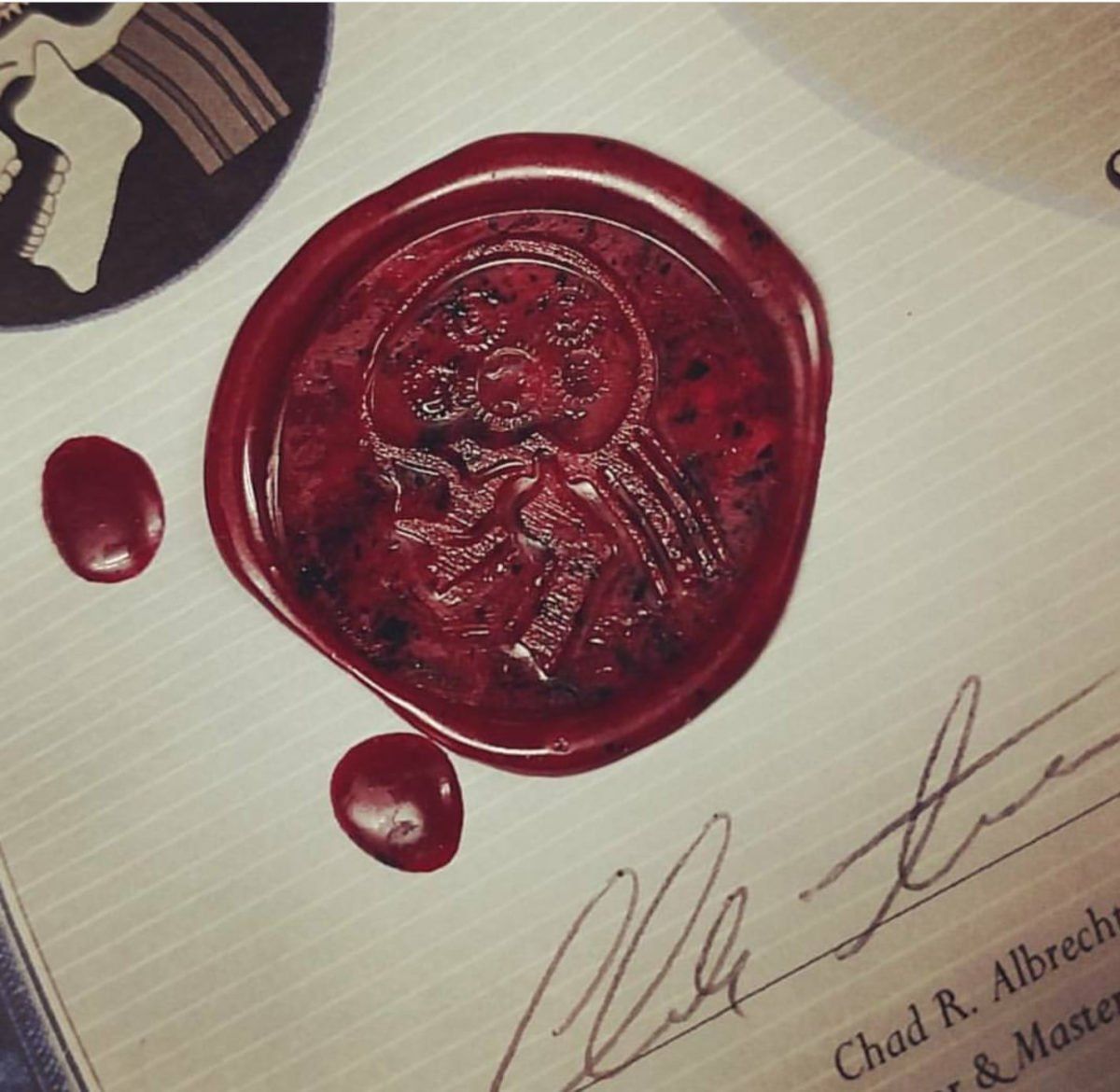
At the AR’s armorer’s class that I do, at most, you’ll field-strip the firearm. If there are problems with the barrel assembly like how it is mated to the upper, or if there are other problems with components we cannot get into teaching due to time constraints, I’ll usually gloss over that and try to help the student another time after the class.
Essentially, I try to load people with as much information as I can in the Armorer’s class, but in the AR Master Build class I try to put that information into action and they actually start working on things and modifying parts as needed. There are also a ton of procedures and gauges that we go through.
Most people will say “well, what If I don’t have those gauges? You have tens of thousands of dollars in jigs and tools. Which ones do I need?” So, I’ve assembled a list on my Facebook page about gauges and tools for different levels of builder, from basic, intermediate, to expert…In the class, I do show them the basic tools and gauges that I would suggest they have. If they don’t have those, I do show them things that I’d do if I did not have gauges in that situation.
In an AR Master Build class I do make an effort to show students as many assembly options and as many resolutions to problems they might come across, and how to do things if they do not have proper gauges or tools. That adds a lot time to the class. What extends the class even further is mostly us running into interfacing problems.
Q: Do you get pushback on the gauging that you do? I’d imagine there’s a lot of “good enough” that you encounter…
Chad Albrecht, School of the American Rifle: Some people do get upset or offended by it. They’ll relate to me that they have shot X number of rounds through a gun they built without using gauges or techniques that I recommend and that their gun shoots just fine.
That may very well be true. I am always honing what I do, and I am always trying to improve things to give the student a better sampling of what they should be looking for. If someone does not want to follow along with what I am recommending, then I guess they’re just rolling the dice (laughs).
Even the good shops that put out great firearms sometimes miss things. I see that in armorer’s classes sometimes. Instead of someone bringing in a box of parts, they will bring in an assembled gun that we will tear down.
While tearing one down, we’ll see things like the barrel nut being grossly over torqued or the company did not use any assembly lubricant for the barrel nut, or they didn’t stake the castle nut, or the fire control group pins are pressed in and they don’t move freely and you have to bang them out with a hammer.
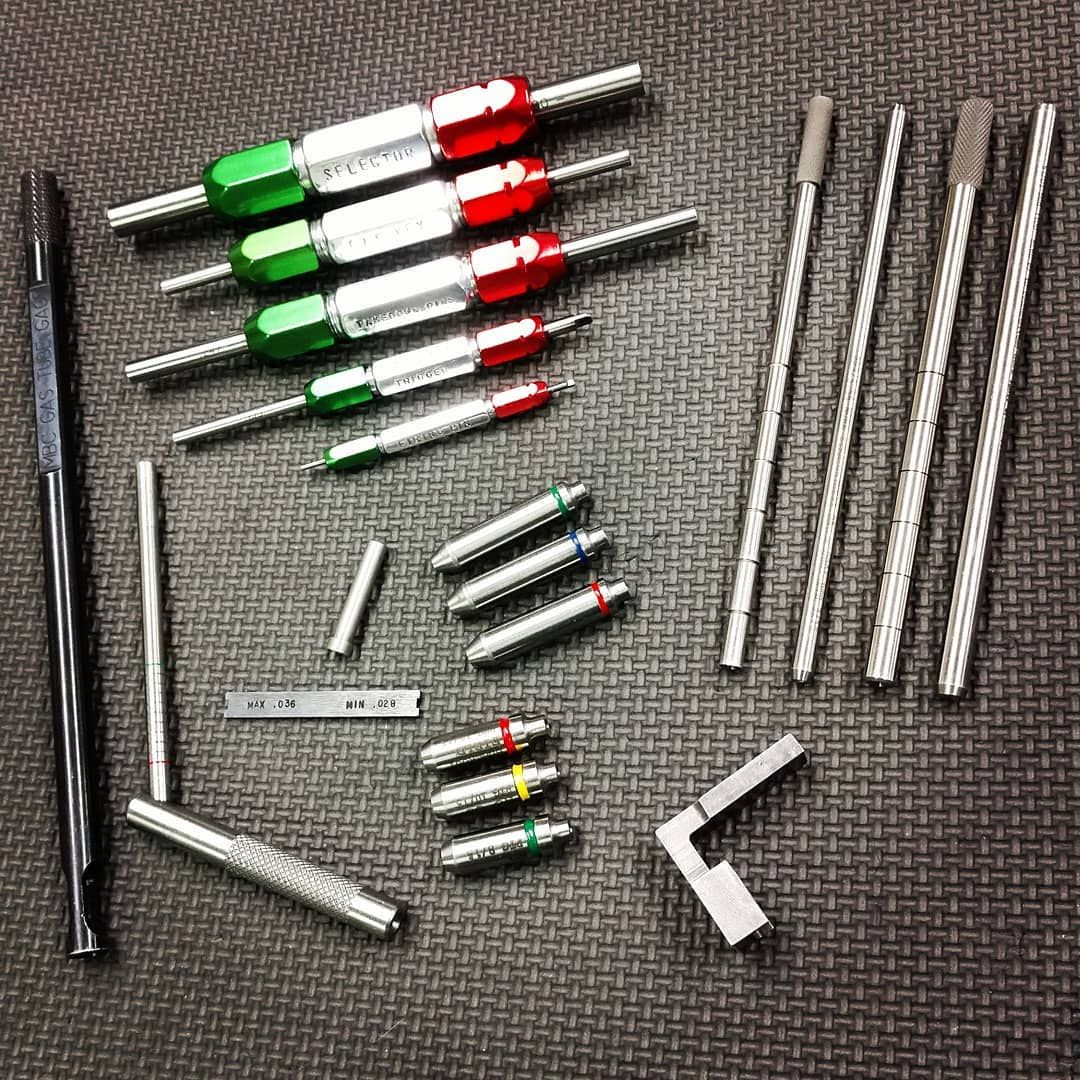
Q: I think on the internet, people tend to both take things very personally and have an “all or nothing” approach when it comes to items they have spent money on…
Chad Albrecht, School of the American Rifle: Out of the gate, some people get offended when I mention problems I see. What they don’t realize is they are looking at one sample. I have something I have put on social media, or discussed in a video…they will respond that they own a gun with components from that company and “it is fine.”
They should understand that I am NOT saying that you cannot build a gun with those company’s components into something that is rather trustworthy. About 50 percent of my students bring parts kits to the class that are under $400 counting the lower. They go really on the extreme budget side.
The caveat there is that when they do that, every student who comes to my build class is required to tell me what they are bringing. Some of them think I am trying to scare them or intimidate them into bringing something that is perhaps more expensive , but that is not the case at all.
Q: Is it a case of needing to know what you’re getting into as an instructor?
Chad Albrecht, School of the American Rifle: What I am doing when I ask that is I am trying to determine whether or not there might be interface problems with the parts they have selected because they might not be aware of it, and to make sure I have all the proper tools for the set up and caliber that they are intending to build. I’m not trying to approve or disapprove of what they are wanting to do. I’m making sure that when they arrive at the class, I have what I need to make their experience with me as good as possible.
I’ve yet to have a student come to my class with a budget grade gun that I have not given them tips on what things to make sure they have before they come, as well as advice on replacing certain parts. And by doing that, we have had great success making those cheaper, budget guns run…it’s just a matter of making sure we address certain things.
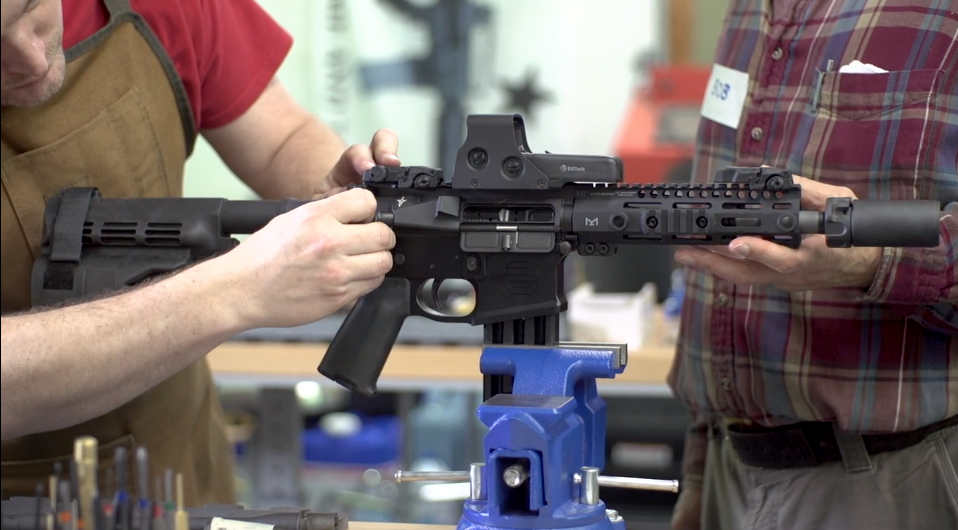
Q: Is there a major thing to address right off the bat with these budget AR builds?
Chad Albrecht, School of the American Rifle: Upgrading AR springs are the main thing. I usually tell people who buy cheaper parts to at least replace the springs on the gun. If everything else then checks out, we should be O.K., unless the gun is grossly over-gassed or something like that.
Q: As far as upgrading AR springs, can you explain to beginners just what springs you are talking about?
Chad Albrecht, School of the American Rifle: The main springs that are usually the problematic ones in the cheaper kits are the ejector spring, the extractor spring and the buffer spring, which is also called the action spring. Those three springs, in the cheaper kits…are things that you don’t want to take a gamble on. I tell people interested in upgrading AR springs to buy a chrome silicon spring from Brownells if they don’t want to buy something from Sprinco,
I generally do recommend people put Sprinco springs in their guns. If they can replace all three of those springs with ones from Sprinco, I’d recommend that. I also am a big fan of the gold color Colt extractor springs. They are a very good alternative to the Sprinco springs. There are other companies out there that have springs that are relatively problem-free, but the one I just mentioned are the ones I gravitate towards because I never have problems out of them.
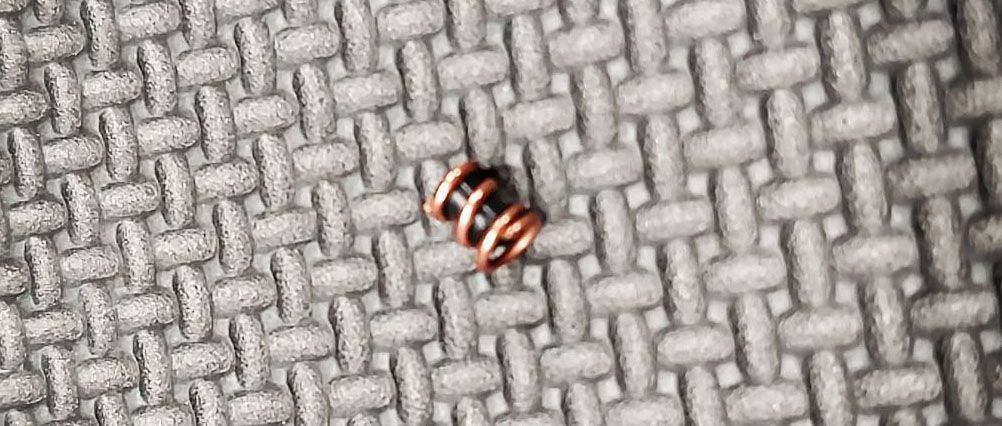
While I recommend upgrading AR springs, I do find that some students are not willing to go with them for their builds. They feel that spending another 40-50 dollars on three springs is worthless. That’s 10 percent of their kit if they paid $400 dollars for it.
Spending that extra money and upgrading AR springs seems to be a steep upgrade in their opinion…but then they go and spend extra money for a bunch of doodads that hang off their gun that really give no quantified improvement in performance, but they really want those doodads on the gun. So, they do that, put cheap springs in the gun and then roll the dice.
###
Look for the second part of this discussion this week where we discuss common questions about AR lower receivers…
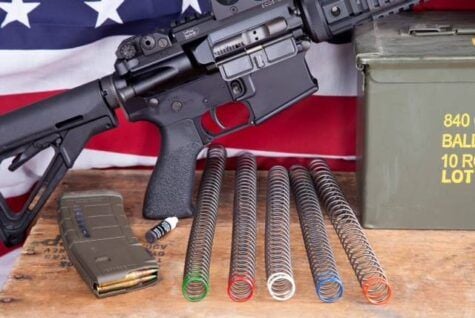
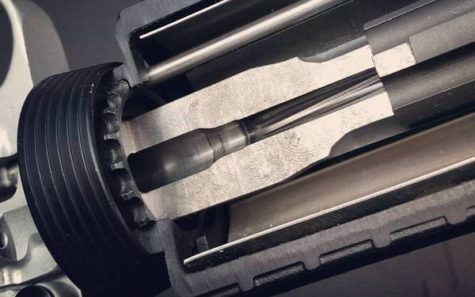

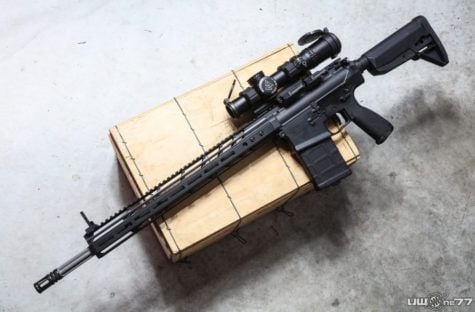

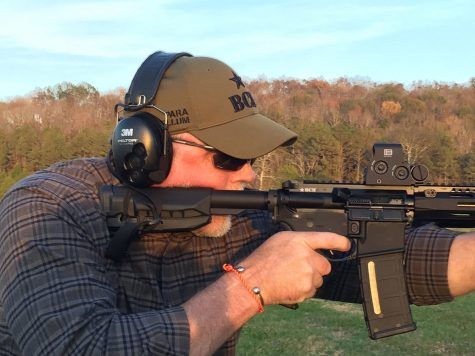
Absolutely love the articles from School of the American Rifle. Please keep them coming.